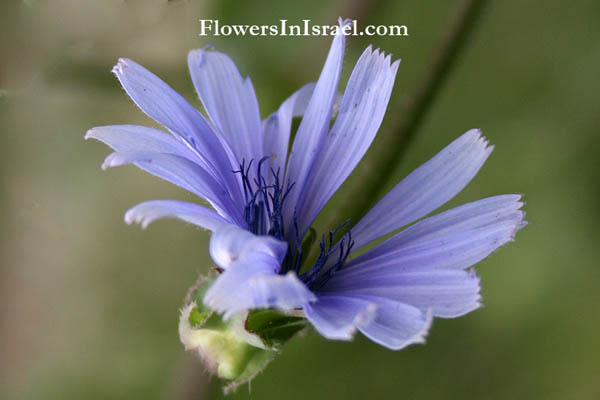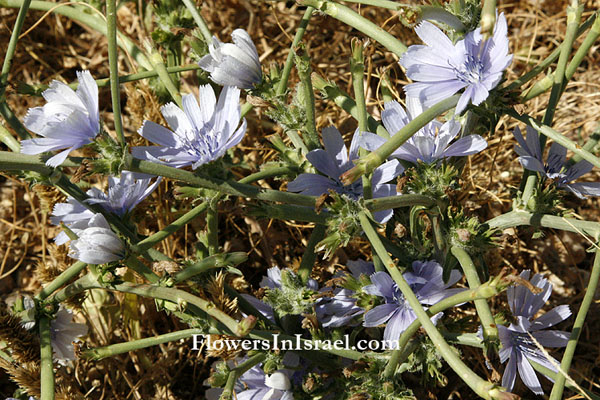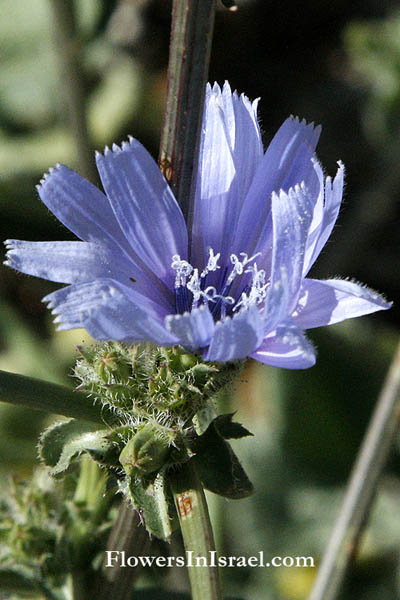Hebrew: עולש מצוי, Arabic: علك ، هندباء برية, Egypt: سريس "Sireis", شيكوريا "Shikorya"
| Scientific name: | Cichorium endivia (Schousb.) P. D. Sell | |
| Synonym name: | Cichorium pumilum (Jacq.) Cout. | |
| Common name: | Dwarf Chicory | |
| Hebrew name: | עולש מצוי | |
| Arabic name: | علك ، هندباء برية | |
| Egypt: | سريس "Sireis", شيكوريا "Shikorya" | |
| Plant Family: | Compositae / Asteraceae, מורכבים |

|
| Life form: | Annual | |
| Stems: | Up to 170 cm tall, erect, glabrous or with some scattered hard hairs | |
| Leaves: | Alternate, rosette, dissected once, dentate or serrate | |
| Flowers: | Light blue | |
| Fruits / pods: | Achene, obovoid to cylindrical, 2–3 mm × 1–1.5 mm, brown, with pappus of 1–3 rows of small, persistent membranous scales | |
| Flowering Period: | April, May, June | |
| Habitat: | Batha, Phrygana | |
| Distribution: | Mediterranean Woodlands and Shrublands, Semi-steppe shrublands, Shrub-steppes, Deserts and extreme deserts, Montane vegetation of Mt. Hermon | |
| Chorotype: | Med - Irano-Turanian | |
| Summer shedding: | Ephemeral |

Derivation of the botanical name: Cichorium, the Latinized version of the Arabic name for one of the species. endivia, from Late Latin endivia, from Late Greek entybion; probably of Eastern origin (perhaps from Egyptian tybi "January," which is when the plant grows in Egypt). pumilum, dwarfish, little; dwarf.
Maror never appears in the singular but rather as the plural merorim מרורים - it means "bitter herbs", from mar מר - "bitter". See the list of Medicinal herbs in Israel, the parts used and their medical uses to treat various diseases. Bible resources:


|